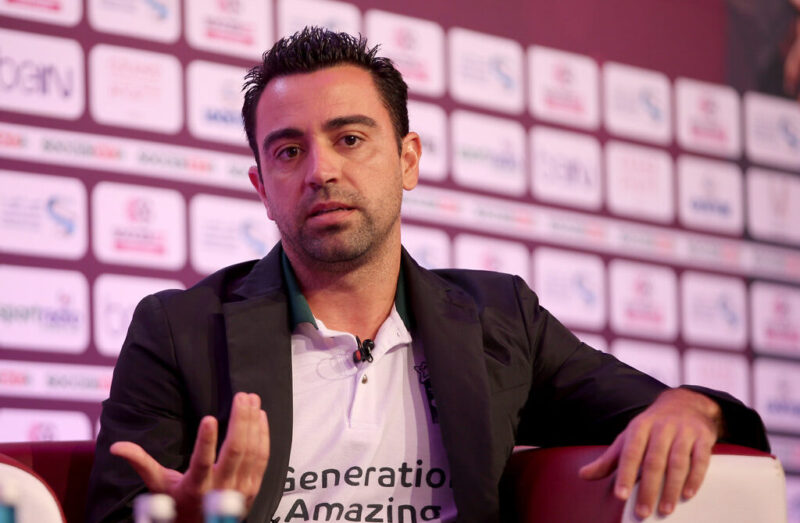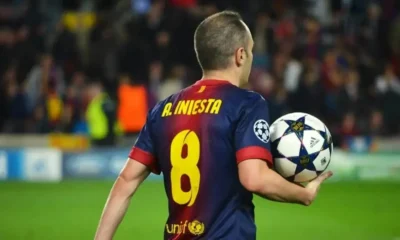Football
Tactical review: Barcelona vs. Espanyol – Xavi’s first impression, even with scratched ears, is positive
Barcelona has ushered in a new era. The return of club legend Xavi has put an élan in the veins of fans and players alike. Not on the pitch, but on the coach’s bench. He began his tenure by ending the four-match wait for a win left behind by Ronald Koeman.

Barcelona has ushered in a new era. The return of club legend Xavi has put an élan in the veins of fans and players alike. Not on the pitch, but on the coach’s bench. He began his tenure by ending the four-match wait for a win left behind by Ronald Koeman. How did the new Barcelona look in the derby?
Al-Sadd under Xavi
Let’s start with the style of play that his first team, Qatar’s Al-Sadd, presented under the young coach. He moved to the club from Barcelona in 2015, then still as a player. After finishing his active career, he immediately embarked on a coaching career, specifically at Al-Sadd.
The inaugural season 19/20 could certainly not be rated as a successful one. Al-Sadd, as the defending champions, finished in 3rd place with five defeats. Last season, however, was a different story.
Xavi’s charges never once felt the feeling of defeat and dominated the Qatar League in a dominant manner. In the current season, the club also left the top spot undefeated.
The most common formation was the 3-4-3 formation, with wingers at striker level stretching the play and a square of midfielders operating underneath the top striker. The main features of Xavi’s football were ball possession and wide areas of the pitch. He always tried to make the pitch as wide and long as possible, as well as the opponent’s defensive line.
He wanted his charges to have the ball on the hoof as often as possible, while at the same time having enough space to create scoring opportunities, which they certainly did. In fact, this season the average number of goals scored per game is equal to four.
Barcelona vs. Espanyol | Ball Game
The Catalan side didn’t have to worry too much about the build-up play in Saturday’s Barcelona derby. Espanyol were holed up in a deep block in a 5-4-1 formation, with the occasional 4-1-4-1 when the central defender came on. Thus, all it took was a few pinpoint passes and Xavi’s charges found themselves in the role of besiegers.
Barcelona went into the match in a 4-3-3 formation, which, however, did not differ much from the aforementioned 3-4-3. On the right wing, the only 17-year-old Akhomach made his debut in a Barcelona jersey, whose main role was just to stretch the play and keep the width of the pitch until the touchline, while the main focus of the game was on the left side.
There, Gavi was operating on the edge of the offensive, but unlike Akhomach, he had the quick and offensive Alba at his back, who had countless runs both in tandem and straight at the defence. The right-back position, on the other hand, was occupied by Mingueza, who retreated more into the middle and kept the team’s defensive stability. At times, even with the stoppers, he formed a defensive trio.
Knowing that they had up to three players behind them defending possible counter attacks, the midfield duo of De Jong and Nico could also push forward, operating in the so-called half spaces. That is, the spaces formed between the stretched wingers and the spike striker, which was Depay in Saturday’s derby.
The attacking trio, together with the two midfielders, formed an attacking five, which was easily penetrated by Espanyol’s defence. In order to achieve an over-match, the aforementioned Alba rushed forward more and more often, either forming a sixth player in an imaginary line behind Gavi, or this pair pushed De Jong, who was given more space to create actions in front of the defensive line, especially for the active Depay.
The high number of runs is confirmed by the seven offsides, which, on the other hand, is a great praise for Espanyol’s compact defence. The last unmentioned player, Busquets, held the axis of the pitch and took care of the brisk transfer of the centre of gravity from one side to the other.
The right winger also had a simple concrete role in Xavi’s system. As well as holding the width of the pitch, he was tasked with going into one-on-one duels and sending ball after ball into the hexagon, something that both Akhomacho did admirably in the first half and the substituting Ezzalzouli in the second half.
The latter scored the highest number of dribbles of all in a single half, while Akhomach excelled in centering the ball.
Barcelona vs. Espanyol | Playing without the ball
Xavi had a high pressing game in Qatar, based on personal defending. The stoppers, together with Depay, were dismantled by Gavi. Lopez, the pivot of the defensive five, was occupied by Nico, while De Jong and Busquets dismantled the rest of the midfielders. The outside backs were then guarded by Akhommach and Alba, with the remaining defenders taking care of the rest.
On kick-offs, Barcelona then had the height advantage mostly thanks to Busquets and the stoppers with Minguez, and managed to win the ball back quickly and dominate the game. The problems started to appear at the end, when Barcelona were no longer physical and the ball could not be recovered as quickly as Xavi would surely have liked.
Evaluation
Xavi’s debut can definitely be judged as a success. After almost a month on the league scene, Barcelona won and the new system lived up to expectations in terms of the return of good old Barcelona. It was full of quick short passes and, most importantly, dominance on the ball.
However, the victory has a slightly bitter aftertaste due to a lot of missed chances, which Espanyol also created at the end. Moreover, Depay’s winning goal came from a very harsh penalty.
Sources used: Transfermarkt, Whoscored, SofaScore, The Coaches’ Voice, Livesport










